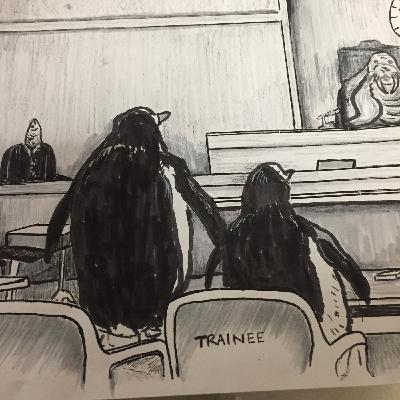Episode 8 - Chief/Direct: Asking questions of your witness in an interesting, persuasive way
Update: 2021-07-09
Description
Convert the wall maps used to prepare your case into convenient A4 size charts to have at the bar table. Leave space on those charts to make notes of items needing attention. Be prepared for the 'unexpected' when those notes will save you. Have your Chronology ready to use and edit.
Do not relapse into a 'make a list' approach. Write out your questions if you must but understand that being tied to that list entails that you cannot properly listen to all that a witness is communicating to the court room in an answer. The 'art of listening well' is the key to your becoming a good advocate. Ensure that the audience is listening by sharing with them the 'road map' of your agenda with the witness. Use partial repetition to reinforce confidence in your witness and in those listening.
Progress the story in small increments, carefully controlled, and with a clear purpose in mind.
The most usual form of questions start with, or include a 'W' or an 'H' word. Why you will avoid 'can, could, should and would' and be sparing with the use of 'do, did, does'.
Do not relapse into a 'make a list' approach. Write out your questions if you must but understand that being tied to that list entails that you cannot properly listen to all that a witness is communicating to the court room in an answer. The 'art of listening well' is the key to your becoming a good advocate. Ensure that the audience is listening by sharing with them the 'road map' of your agenda with the witness. Use partial repetition to reinforce confidence in your witness and in those listening.
Progress the story in small increments, carefully controlled, and with a clear purpose in mind.
The most usual form of questions start with, or include a 'W' or an 'H' word. Why you will avoid 'can, could, should and would' and be sparing with the use of 'do, did, does'.
Hosted on Acast. See acast.com/privacy for more information.
Comments
In Channel






